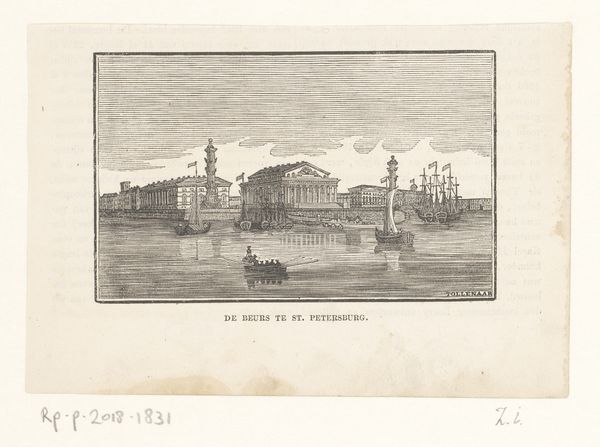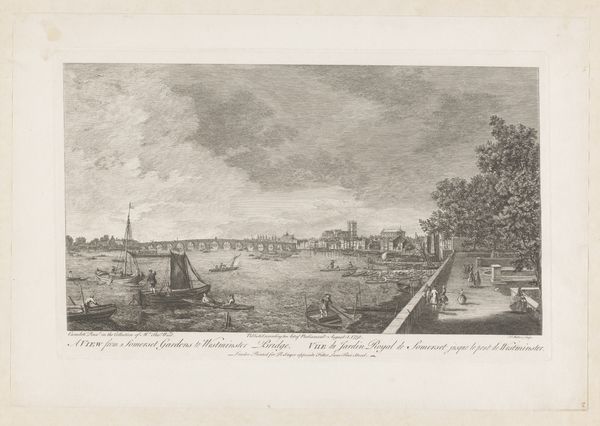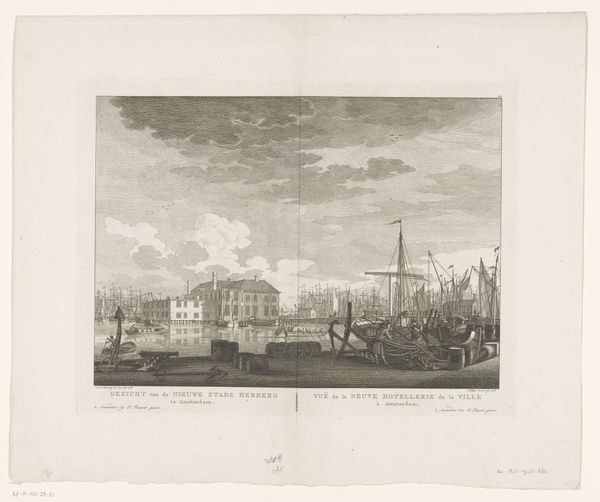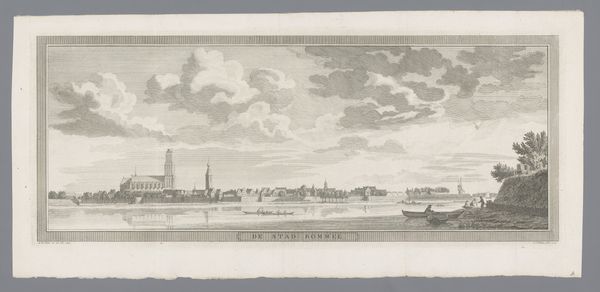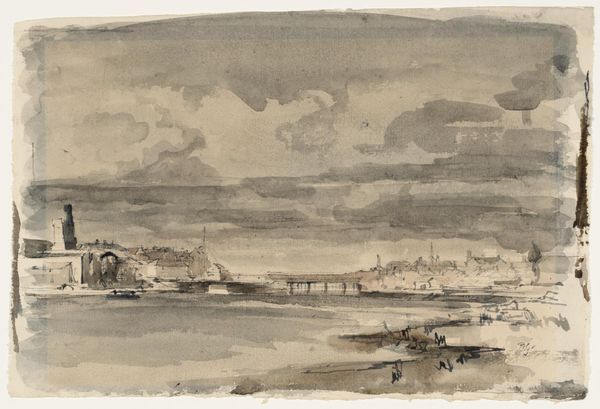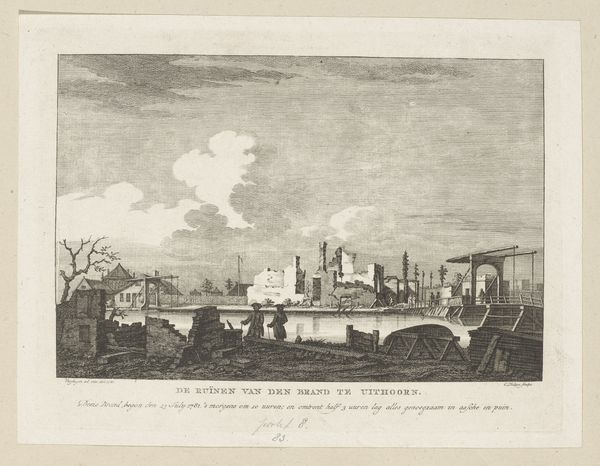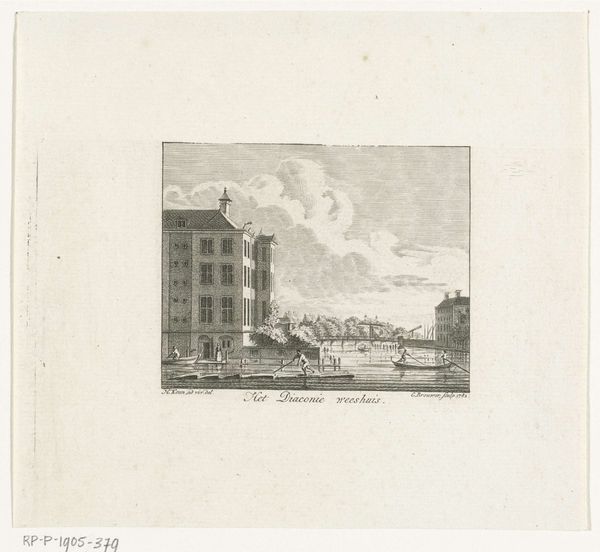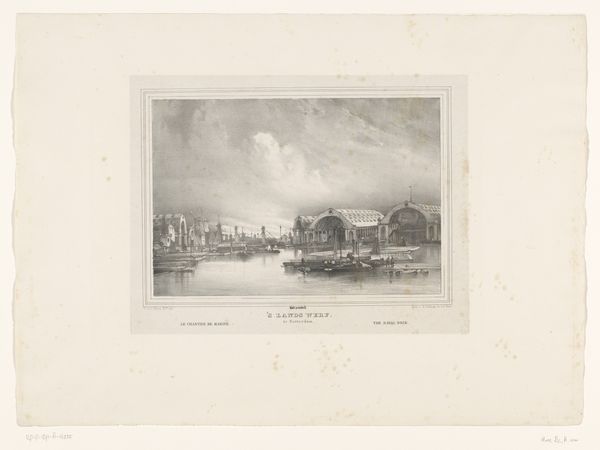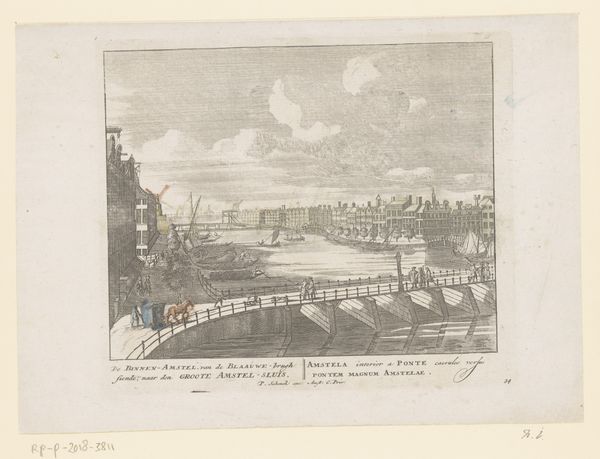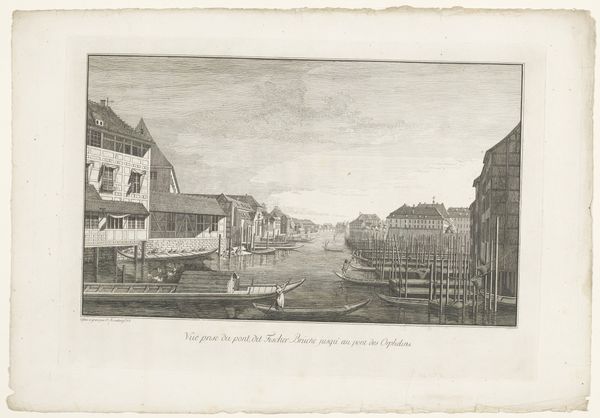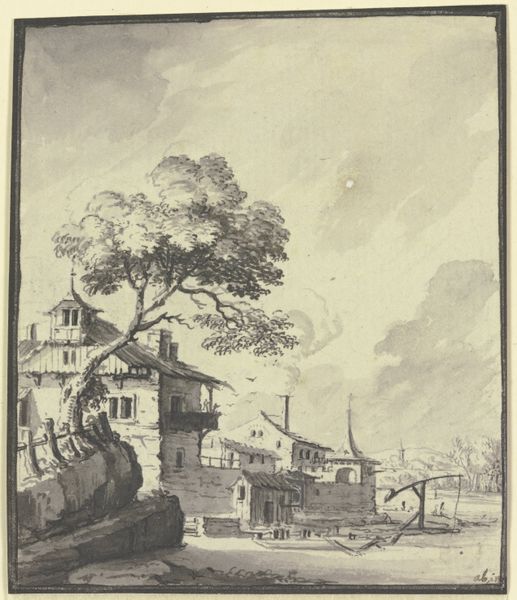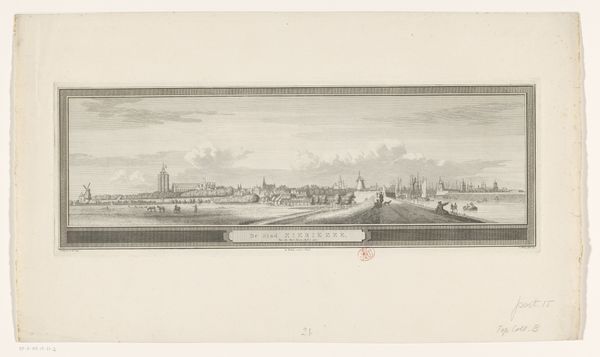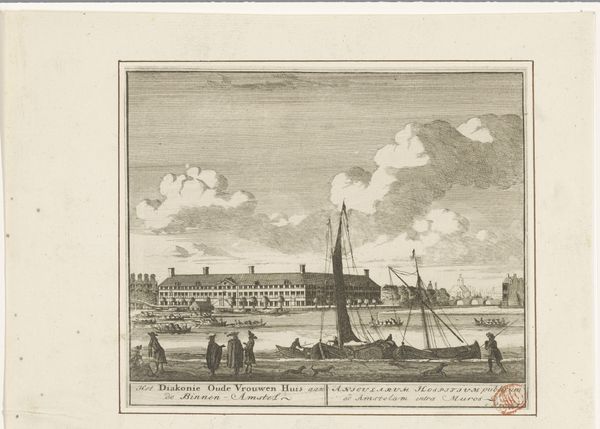
Gezicht op het Oost-Indisch Zeemagazijn en de scheepstimmerwerf op Oostenburg te Amsterdam c. 1695 - 1720
0:00
0:00
print, etching
#
dutch-golden-age
# print
#
etching
#
landscape
#
etching
#
cityscape
Dimensions: height 115 mm, width 149 mm
Copyright: Rijks Museum: Open Domain
Editor: Here we have Gerard Valck's "View of the East India Warehouse and Shipyard on Oostenburg in Amsterdam," an etching dating from around 1695-1720. The precision of the lines is striking, especially in depicting the textures of the clouds and water. What do you see as most significant in its composition? Curator: Formally, the most compelling aspect is the relationship between line and space. Consider the rigid horizontal lines suggesting the sky against the intricate detailing of the architectural structures and cloud formations. There's a distinct dialogue between order and organic form. Editor: So, you are drawn to how the artist is using lines and their arrangement to make a composition that guides your eye? Curator: Precisely. The varying densities of lines create tonal variations, suggesting depth and volume despite the work being primarily linear. Notice the areas of dense hatching—they contribute to the illusion of weight and mass, particularly in the depiction of the warehouse and the sky above. How does this visual language affect your perception? Editor: I guess I'm aware of how controlled it feels, it's carefully composed. Does that restriction add or detract from the image? Curator: The constraints imposed by the etching technique enhance the work’s impact. The uniformity of the line creates a cohesive visual language. The subtle variations in line thickness and density become all the more potent, wouldn't you agree? Editor: That's interesting; it gives you an idea of the artist’s choice when creating the piece and makes you appreciate it in a different light. Thanks for your help. Curator: My pleasure. It's been enlightening to consider this work from your perspective as well.
Comments
No comments
Be the first to comment and join the conversation on the ultimate creative platform.
